Barcelona are finally off the mark in the 2019/20 La Liga season as the Catalans clinched their first three points at the Camp Nou against Real Betis. After the initial shock and falling behind, Ernesto Valverde’s troops rallied behind Antoine Griezmann and co. and really ran over their opposition, winning 5-2 on the night.
This tactical analysis will look into both teams’ tactics and use analysis to see just how Barcelona dominated and won their first La Liga game by stomping Real Betis.
Lineups
Barcelona lined up in a familiar 4-3-3 shape but with rather experimental names in the fold. The backline saw some familiar faces but the middle and the forward lines were changed tremendously.
Sergio Busquets returned to his position of the team’s defensive midfielder and was accompanied by the newcomer, Frenkie de Jong, and Sergi Roberto. Up front, with the injuries of Ousmane Dembélé, Lionel Messi and Luis Suárez, Valverde decided to field Antoine Griezmann at the centre-forward role and Rafinha and Carles Pérez on the flanks.
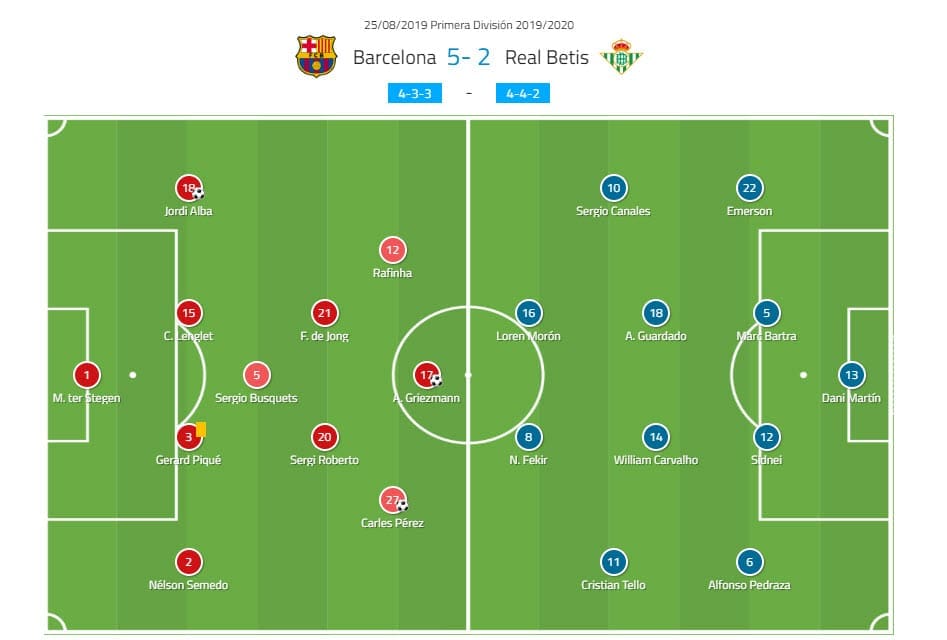
Real Betis also saw some changes to their lineup. Rubi fielded them in a 4-4-2 system but with some personnel changes. With Joel Robles out with a red card suspension, Martín Fernández was in-between the sticks. The rest of the backline remained unchanged but Rubi opted for three more changes up front.
He ditched the double pivot and deployed a quartet of midfielders with Guardado and Canales making their return to the lineup. Instead of a sole striker, we saw a tandem of Nabil Fekir and Loren Morón leading the charge.
Barcelona dominate but can’t penetrate Real Betis’ shape
While it is far too early to be talking about a drastic switch in tactics, but Real Betis seemed to have adopted a different approach now that Rubi has taken over the team. Quique Setien’s Real Betis came to Camp Nou to attack and fight fire with fire but on the weekend, the green-and-whites came only to survive.
And in order to do so, they have (somewhat) successfully taken a page out of Athletic Bilbao’s book from the opening game in which Barcelona simply couldn’t breach their opponent’s defence. Real Betis were patient and sturdy, deploying a rather narrow and compact shape when welcoming the Catalans into their own half.
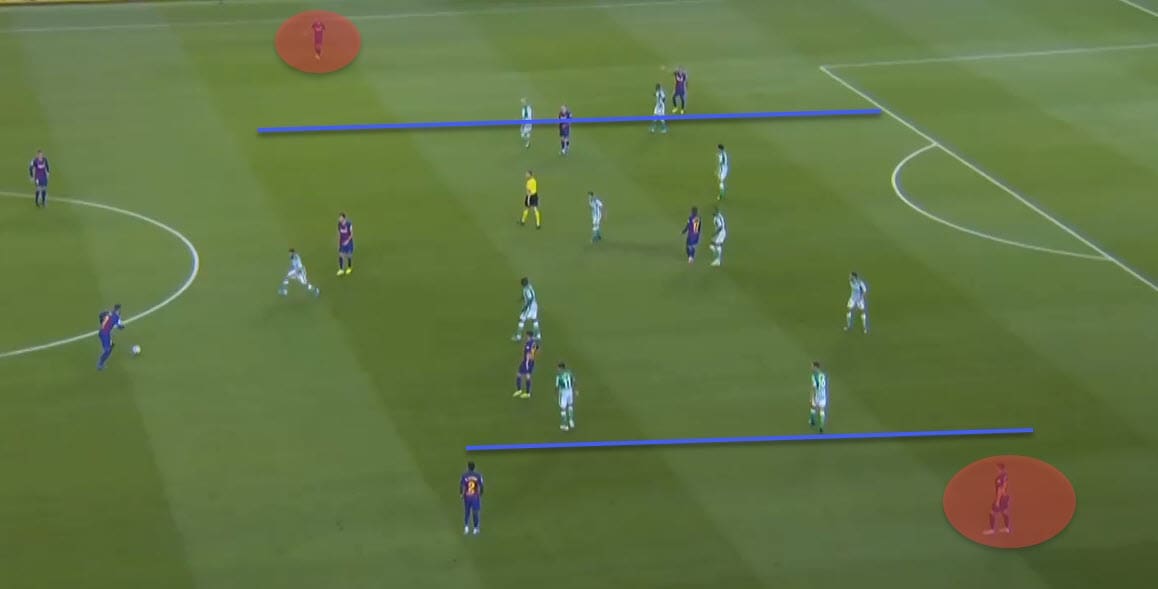
When Barcelona were forced backwards, Betis would not really go into a manic high-press but would rather follow them up until the middle of the pitch and remain in their 4-4-2 shape in a mid-block.
Just like Bilbao managed to negate De Jong’s influence a week ago, Real Betis did the same this time around. The two forwards screened Busquets while the quartet behind them enclosed both De Jong and Roberto, blocking all and any passing channels towards them.
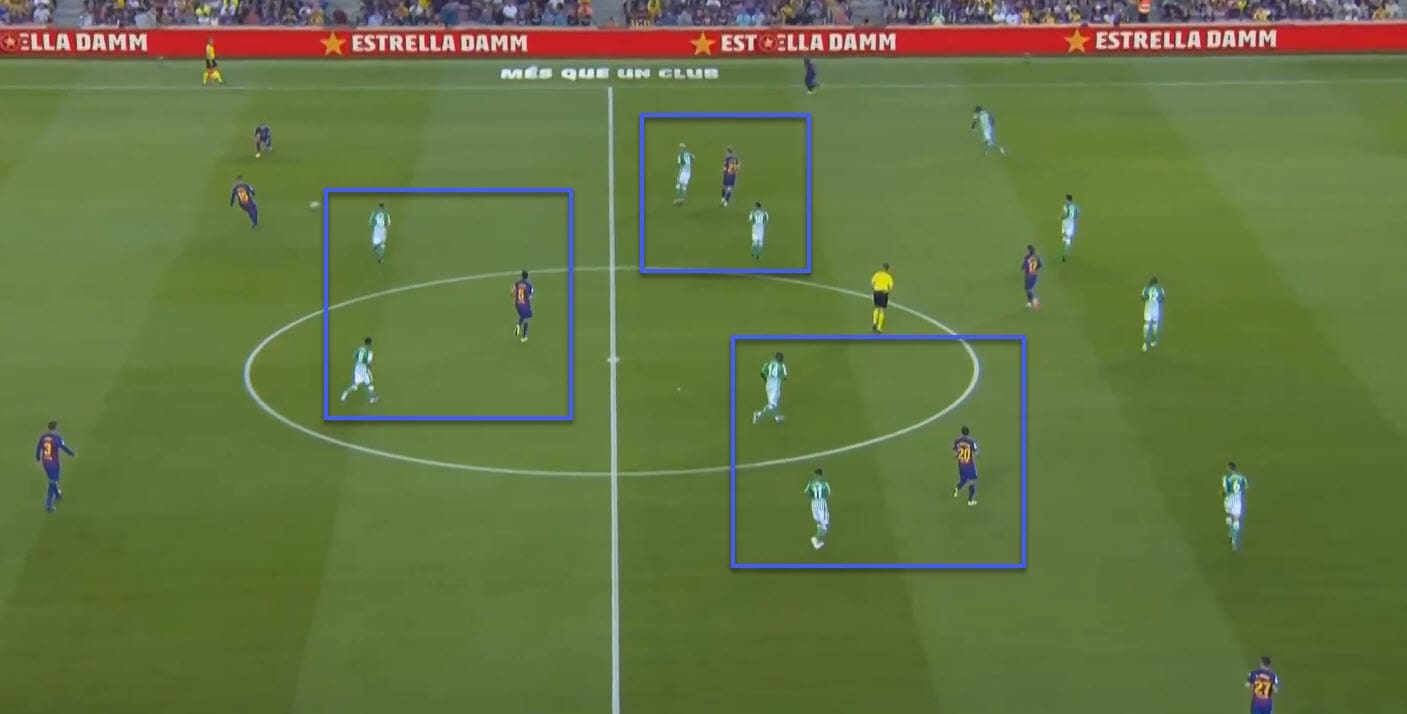
This did a couple of things: Firstly, it meant that the middle channels were all closed down and trying to send passes through there was extremely risky for Barcelona. And secondly, it also forced the home team wide and through the flanks. Since they needed extra bodies to support the build-up, both Jordi Alba and Nelson Semedo were pulled down to receive the ball in deeper areas and then help progress it forward.
And as Barcelona were gaining ground through their wide areas, Real Betis would shift their compact squad accordingly. They also knew Valverde would instruct his players to do overlapping and underlapping runs, especially on the left, so they doubled their markers, following the runs of all players closely, preventing any possibility of a link-up.
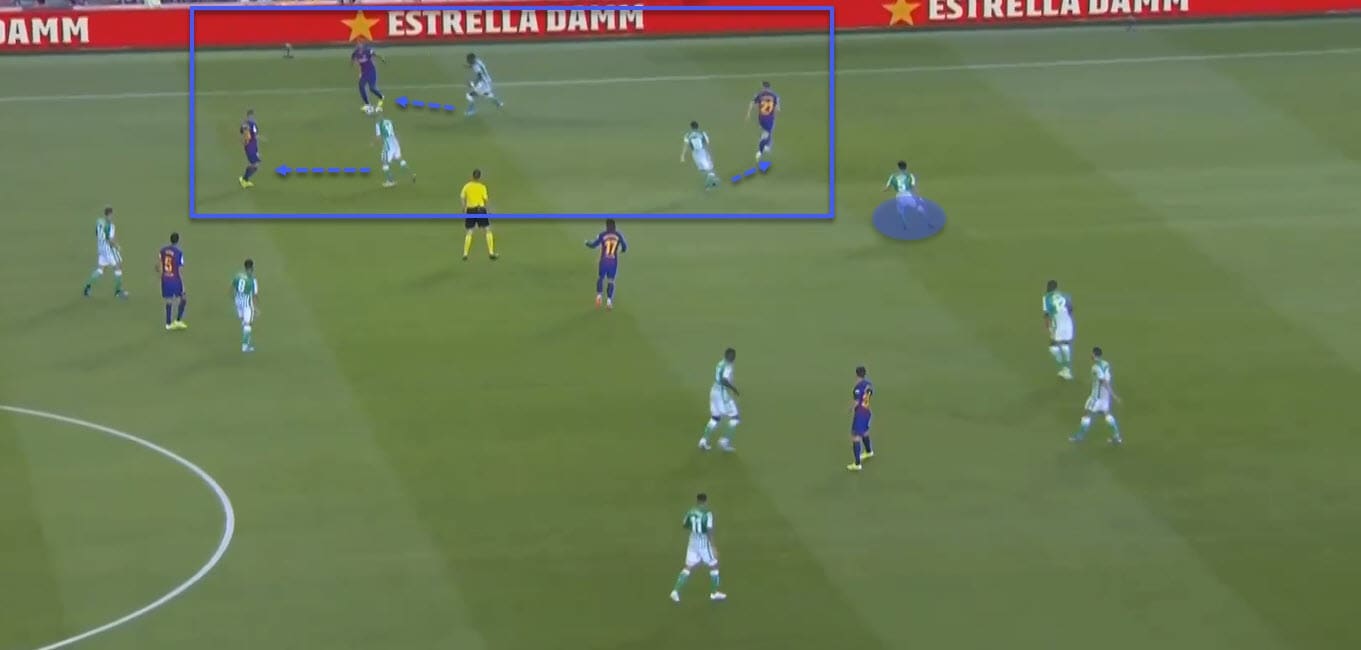
Once that was done, Barcelona would be reduced to only a handful of options in that scenario: continue pressing forward through the flanks and hope to find someone in the box with a good ball or somehow beat the turtled up defence and create space for themselves.
The first option was not really a possibility because all of their forwards were essentially caged and the channels leading towards them were closed. Notice below how all three attacking players are sandwiched between two lines of Real Betis’ defence.
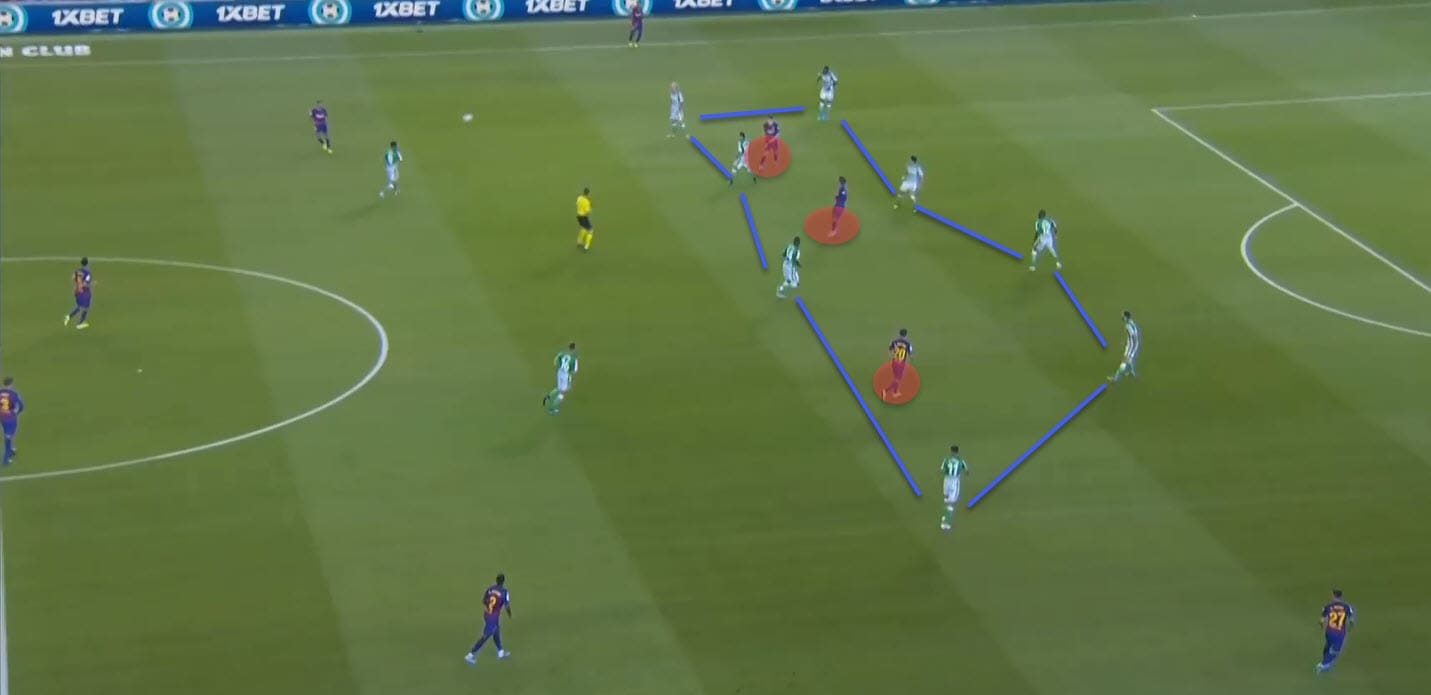
It was obvious that Barcelona would have to somewhat alter their tactics and adapt to their opposition. They dominated possession and the proceeding at the Camp Nou but without almost any palpable results. Luckily, they knew just what to do and they’ve executed it perfectly.
Barcelona’s extreme mobility and dynamism
Even though Barcelona were deployed in what seemed like a rather usual set up with usual tactics, we’ve seen multiple interchanges and mobility between the players on the pitch. Often the two wingers, Rafinha and Pérez, swapped places when they deemed it fit and the midfielders were all over the place.
And despite Real Betis’ solid tactics that tried to nullify Barcelona’s attacking efforts, the Catalans still found a way to play around their double and triple markers on the wings. The keys were the positioning and movement of their troops.
What was particularly interesting were the combinations on the left flank where Rafinha, De Jong and Alba would combine. Sometimes, De Jong would go wide and extremely high up, sometimes he would underlap, laving Rafinha out wide, and sometimes, both of them would drag the markers in order to free up space for Alba to rush into.
Below, we can see how those tactics translated onto the pitch. Rafinha cuts inside to his half-space, leaving the flank to Alba who receives the ball higher up. Once that happens and Alba lays the ball off to the Brazilian, De Jong shifts behind him for cover so the Spaniard can burst forward, drag his marker with him and create space and free the flank for the oncoming attackers.
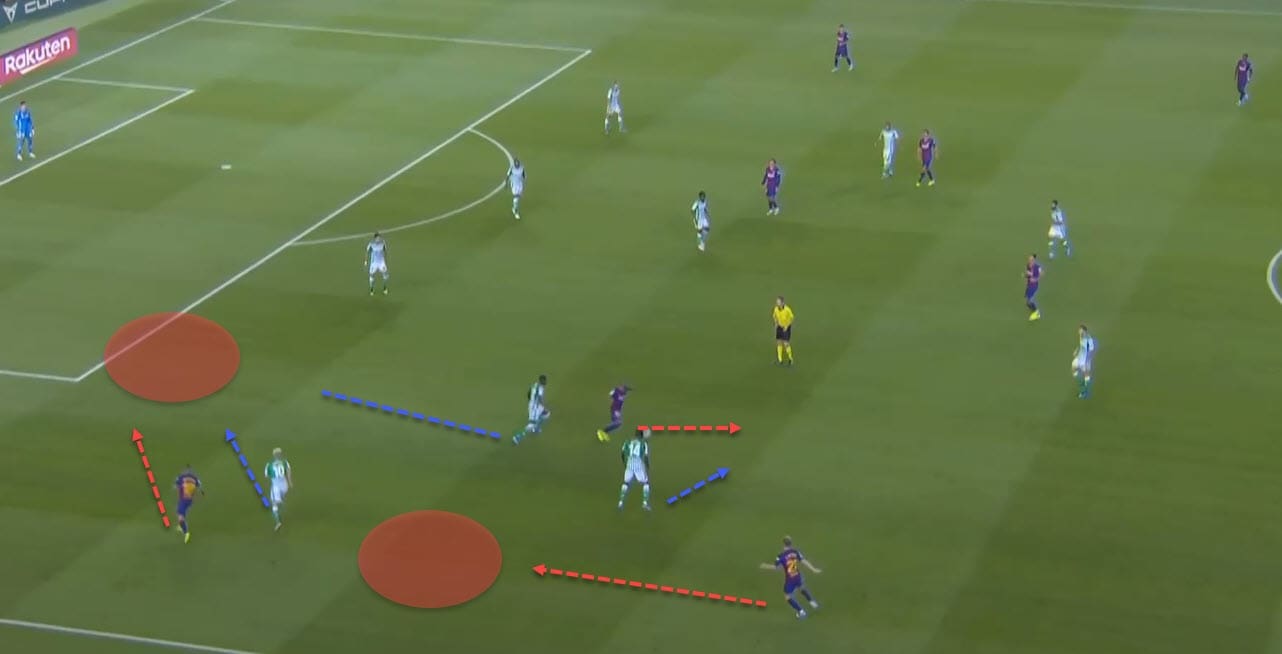
Constant movement meant that Real Betis couldn’t stay faithful to their original shape as their pieces were scattered across the board. Griezmann was also heavily involved, adding more bodies and link-up possibilities to battle the numerical inferiority on the wings.
That was also primarily De Jong’s role as well. The young Dutchman, just like Sergi Roberto on the other side, was played a bit further up the pitch and between the opposition’s lines, as opposed to his deeper role. He would regularly go wide and either support the attack with bursting runs or simply add cover and numbers in order to bypass the tight marking tactics deployed by Real Betis.
Notice below how Barcelona manage to outplay their opposition with their extreme dynamism and mobility. De Jong bursts forward, dragging his marker along and opening up space for Rafinha to cut into. Once the Brazilian does exactly that, two more markers, who were originally tasked to stop the overlap, are suddenly out of position and the whole flank is free for Alba to exploit.
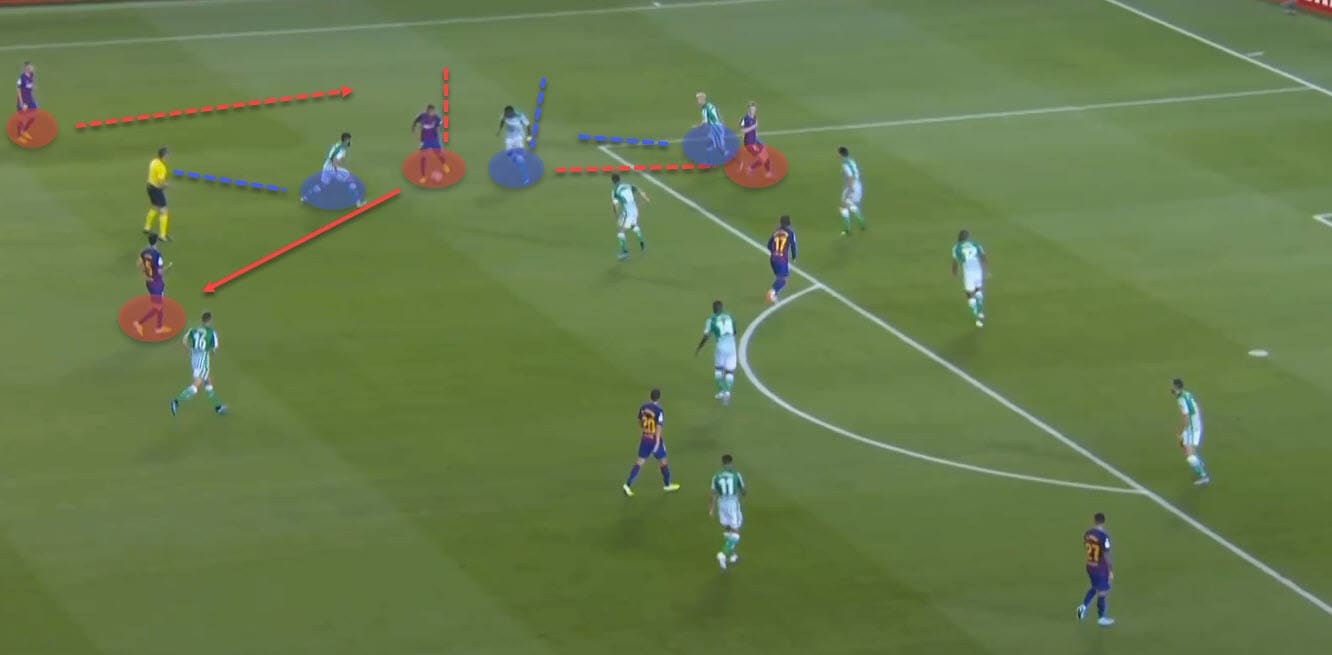
Rafinha quickly lays the ball off to Busquets and he does the rest with a piercing ball that cuts through Real Betis’ shape like a hot knife through butter. Even though they had to bypass a really compact formation, they utilised their great movement and positioning to make quick work of it.
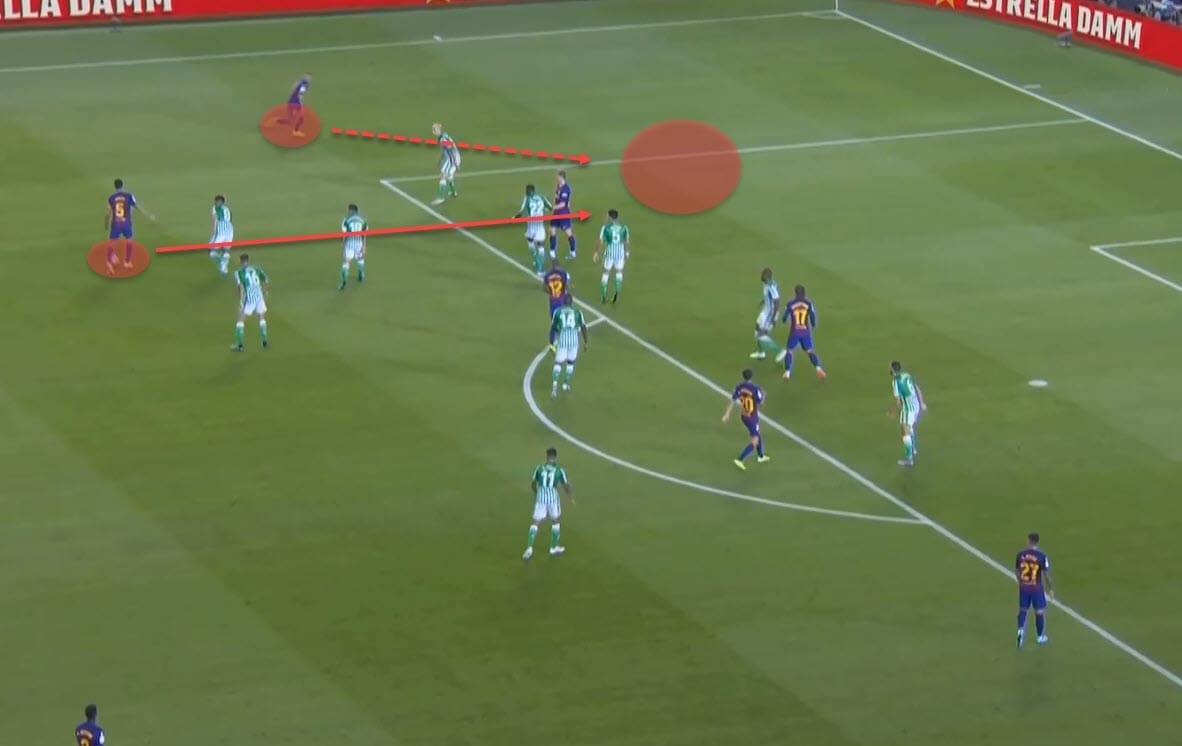
One other aspect Barcelona also had were runners from both flanks. With pacy wingers and energetic players occupying both sides of the pitch, the Catalans could finally pose danger from both left and the right, keeping Real Betis on their toes at all times.
Real Betis rely on mistakes and Barcelona’s aggressiveness pays off
Finally, we’ll shortly do an analysis of how both teams tried utilising their opposition’s mistakes but in a slightly different way and with different tactics. Both Real Betis’ goals came directly after a misspass by Barcelona or after an interception.
In general, they weren’t really efficient in this but it did get them two goals on the night. Both Fekir’s and Loren’s goals came after they snatched the ball from the Catalans’ bad passes around the middle of the pitch.
28% of all of their 64 recoveries were made from the half of the pitch and moving forward and they made a total of 49 interceptions on the night, which is 20 more than Barcelona tallied.
But the Catalans were actually more successful in those tactics, too. 76 out of 86 recoveries they made were actually made around the half of the pitch and in the final third and seven of those Real Betis’ losses directly lead to a shot on goal.
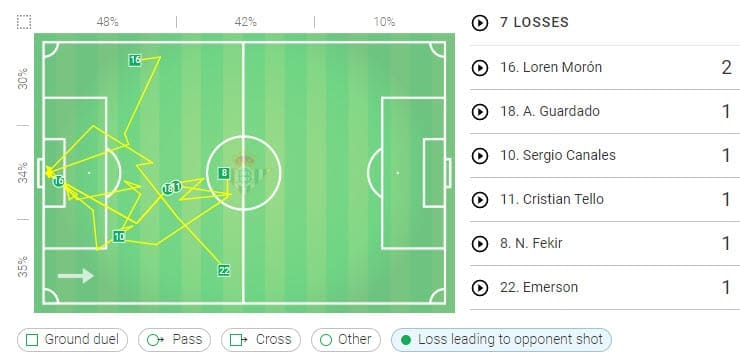
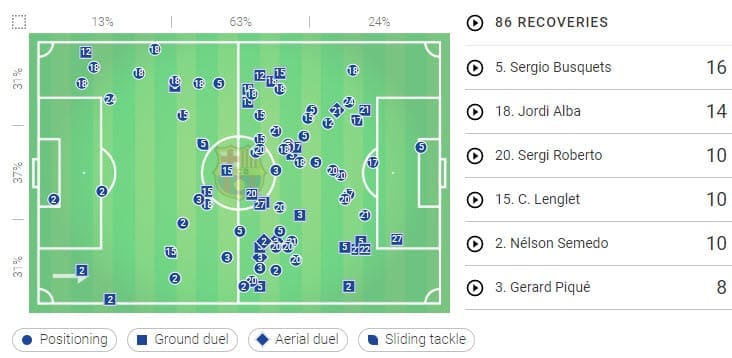
Barcelona also sped up the game extremely, making an average 7.54 passes per possession and due to their high-press and collapsing tactics, they limited Real Betis to only 3.48 passes per possession on average.
When pressing, they mirrored the opposition’s shape and used cover-shadowing to block the passing lines that lead into the higher areas of the pitch. They weren’t always that successful as Real Betis found free space behind them and managed to bypass it.

Notice above how Barcelona try and mimic Real Betis’ shape but fail to do so properly, leading to a relatively easy long ball into the free man in the middle. But the guests were even less successful in their pressing attempts.
They would rarely go all the way to Barcelona’s box but when they did, they tried blocking the channels rather than pressing Marc-André ter Stegen. In order to avoid this problem, De Jong would drop deeper to negate Real Betis’ attempt to cover Barcelona’s sole defensive midfielder.
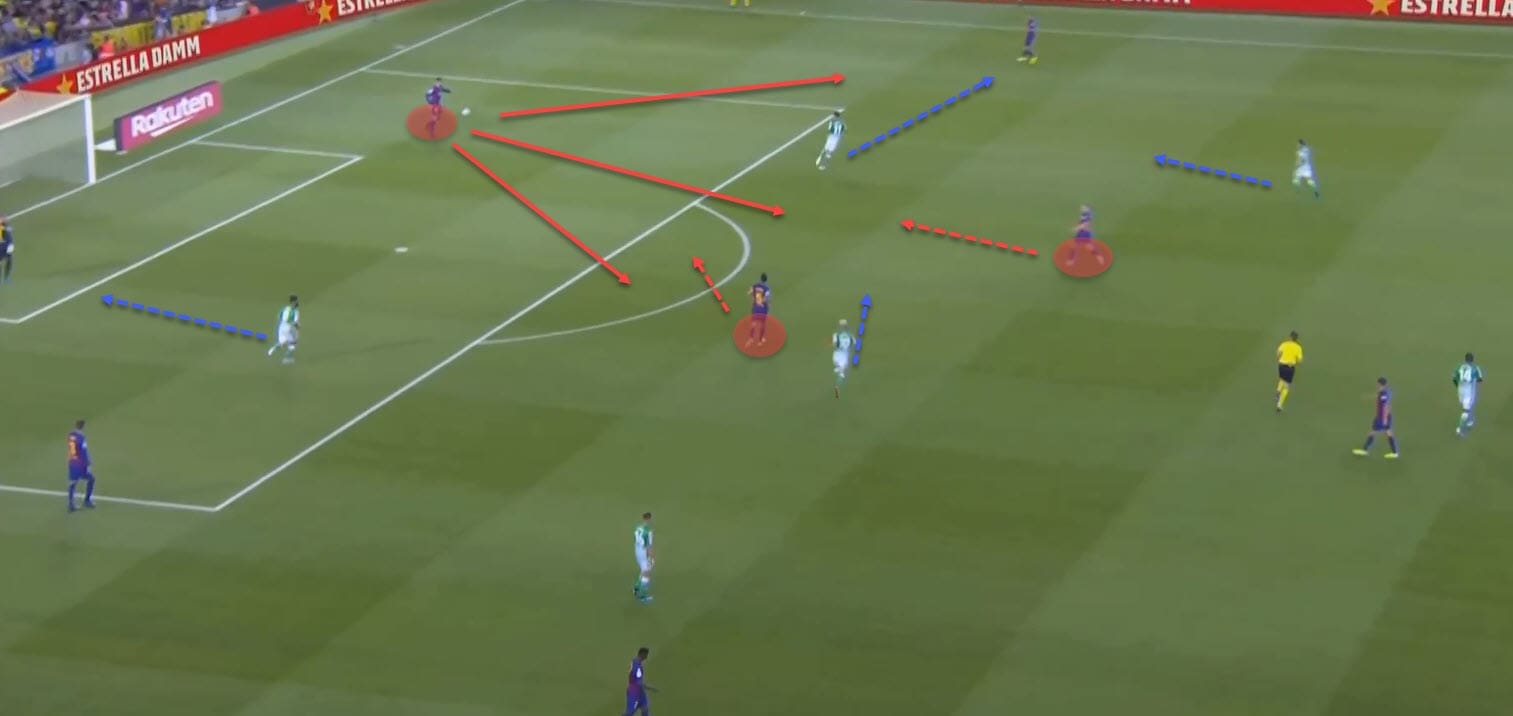
With two pivots, Barcelona had more options to advance the ball and bypass the press. For that reason, Betis stayed deeper and more compact more often than venturing outside of their own half.
Conclusion
The first game at the Camp Nou was an extraordinary clash between two teams whose bouts rarely disappoint. Barcelona finally found their grove and managed to secure the first three points of the new La Liga season without their biggest guns available.
Real Betis, on the other hand, looked too passive and after they lost their lead and their heads, there was no coming back anymore.

If you love tactical analysis, then you’ll love the digital magazines from totalfootballanalysis.com – a guaranteed 100+ pages of pure tactical analysis covering topics from the Premier League, Serie A, La Liga, Bundesliga and many, many more. Buy your copy of the August issue for just ₤4.99 here.

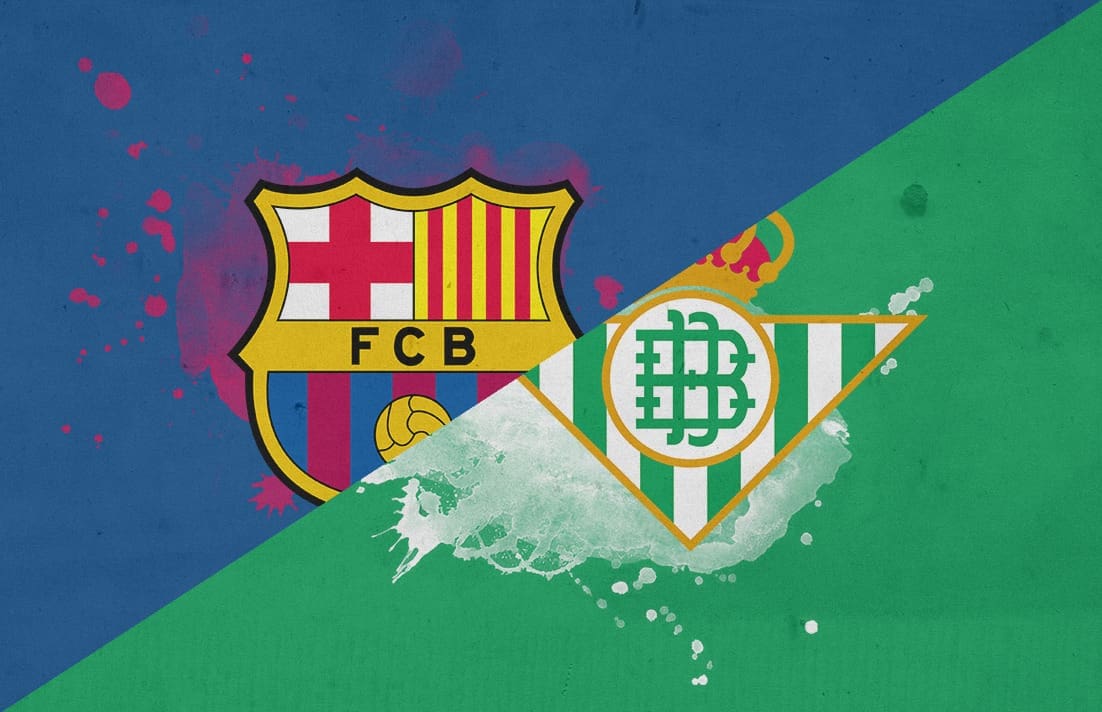



Comments